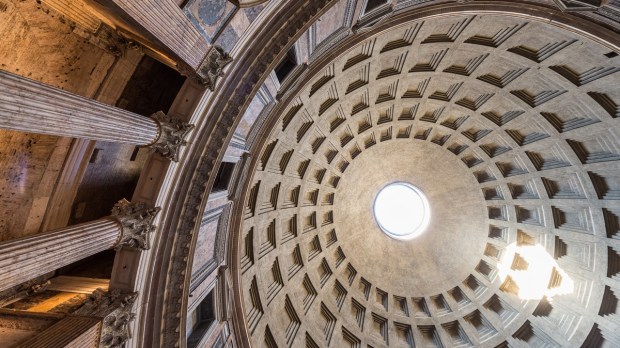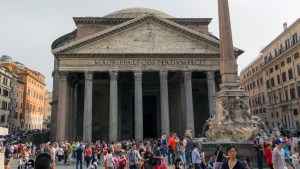There’s a reason that buildings constructed by the Roman Empire upwards of 2,000 years ago are still standing. The Romans had discovered a method of mixing concrete that far surpassed the technology of today, but this knowledge was lost to time. Now, however, an international team of researchers has identified the long lost secret that gives Roman concrete its longevity, and it could come back into style in the 21st century.
CNN reports that the study team, a joint effort of experts from the US, Italy, and Switzerland, examined samples of Roman concrete from the site of Privernum. The samples showed the usual mix of materials: slaked lime, volcanic ash and rock, as well as smaller rocks and particles called tephra. It’s not that the samples were any different in make-up than previous studies examined, but this time the researchers noticed something they’d been overlooking for decades.
Mistake?
Roman concrete samples generally show small white chunks in the concrete called lime clasts. For the longest time, experts believed that these were undesired elements of the concrete brought about by poor materials or mixing. Now, however, they have found that lime clasts are the key to Roman concrete’s strength.
Admir Masic, lead author of the study, stated that they began to question the presence of lime clasts as an accident, because the Romans were very deliberate in their selection of materials. According to New Atlas, Masic said that this was where the mystery began to unravel:
“If the Romans put so much effort into making an outstanding construction material, following all of the detailed recipes that had been optimized over the course of many centuries, why would they put so little effort into ensuring the production of a well-mixed final product? There has to be more to this story.”
Chemical reaction
When put under the scrutiny of imaging and chemical analysis, the team found that the lime clasts were produced from calcium carbonate at high temperatures. Furthermore, in this activated form, the lime clasts can help the concrete “self-heal” when it is subjected to water. The water runs through the cracks, and reacts with the lime clasts to form a solution that fills in the cracks and reverts to calcium carbonate. This is also why samples taken from underwater have been found to be even harder than those on land.
That the lime clasts are not a byproduct of the process, but a desired outcome, is a major discovery, but so too is the identification of the high temperatures needed to produce them. Masic said that the hot-mixing methods of the Romans could be the key to everything, even strengthening our modern concrete. CNN has his explanation:
“The benefits of hot mixing are twofold,” Masic said in a news release. “First, when the overall concrete is heated to high temperatures, it allows chemistries that are not possible if you only used slaked lime, producing high-temperature-associated compounds that would not otherwise form. Second, this increased temperature significantly reduces curing and setting times since all the reactions are accelerated, allowing for much faster construction.”
The team was able to go so far as to test their theories by making samples of Roman concrete by ancient formulas, as well as samples of modern concrete. The samples were deliberately cracked and subjected to two weeks of running water. By the end of the experiment, the water could no longer run through the Roman concrete, but could easily make it through the modern samples.
It is unclear how and when the benefits of Roman concrete will be adapted into modern techniques, but the team noted that to do so may lower the annual greenhouse gas emissions attributed to concrete. Concrete production is estimated to contribute 8% of global greenhouse gas emission.



